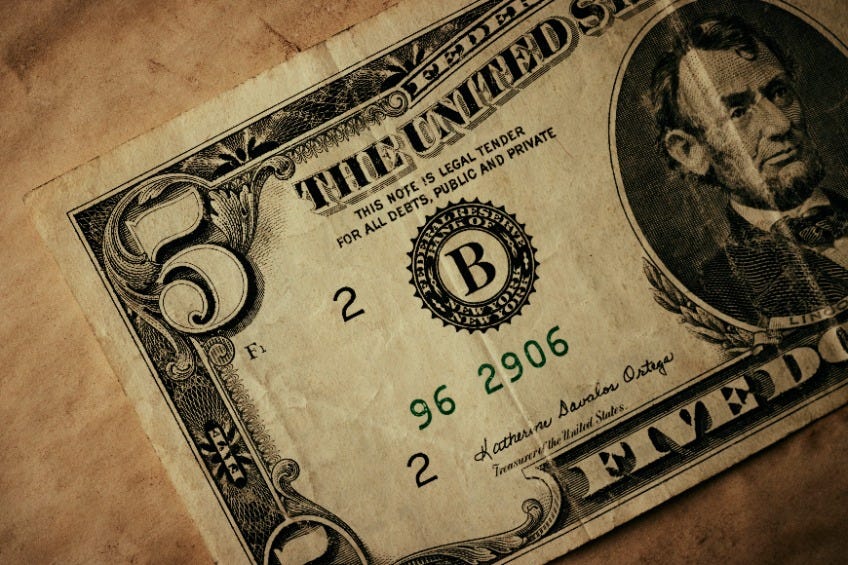Today In Black History: Frederick McKinley Jones
Mechanical Engineer and Inventor of the Refrigerated Truck and Advanced Movie Sound Systems
Issue #632 Today In Black History, Monday, June 10, 2024
Help us to reach our June 2024 goals: +125 total subscribers and +75 paid subscribers:
Please share and subscribe to help us grow this publication.
If you like us, REALLY like us, please click the “Like” button at the end of this post!
Also, please scroll to the end of this post for other ways to financially support us and We Are Speaking with our books and courses.
We appreciate your support!
Today’s Black History WOW!
Frederick McKinley Jones was born in Cincinnati, Ohio, on May 17, 1893. He was a mechanic and self-taught engineer whose invention of the refrigerated truck revolutionized the transportation industry.
His father was Irish-American and his mother was African-American. His mother left the family when Jones was very young, and Jones was soon sent to a Catholic rectory. His father died when Jones was ten, and Jones quit school when he was 11 years old. By age 14, Jones was hired as an auto mechanic and garage foreman.
In 1912, Jones moved to Hallock, Minnesota, where he worked as a mechanic on a 50,000-acre farm owned by James J. Hill, who also owned the Great Northern Railroad. Jones received his engineering license at age 20 and later upgraded his license to the highest grade.
During World War I, Jones served in the U.S. Army in an all-Black unit, getting promoted to sergeant working as an electrician and even teaching other soldiers. Jones performed the wiring necessary to equip his camp with electricity, telegraph, and telephone services.
After his military service in World War I, Jones worked as a mechanic while learning about electronics. He built a transmitter for the town's first radio station. He also invented a device to combine sound with motion pictures. These inventions attracted the attention of local entrepreneur Joseph A. Numero of Minneapolis, Minnesota.
Numero owned a company that manufactured audio equipment called Ultraphone Sound Systems Inc., which was later renamed Cinema Supplies Inc. He hired Jones in 1927 as an electrical engineer to improve the audio equipment made by his firm. Jones worked on converting silent movie projectors into audiovisual projectors and revolutionized the cinema industry by creating a superior sound system for projectors at the time. Jones also patented a ticket dispensing machine for movie theaters.
In the 1930s, Jones was hired by a Minneapolis-based company to help solve the problem of transporting perishable goods over long distances. At the time, the only way to transport goods such as meat, dairy, and produce was by using ice, which was expensive, unreliable, and often resulted in spoiled goods.
Around 1938, following a request by Numero, Jones designed the portable air-cooling unit for trucks carrying perishable food to prevent spoilage. After several refrigeration unit models proved inadequate, in 1941 Jones completed the development of the Model C refrigeration unit, which was mounted to the front of the truck. It was compact, light, and withstood road travel vibrations.
This invention allowed for the safe and efficient transport of perishable goods, opening up new markets and opportunities for farmers, grocers, and other businesses. The refrigerated truck quickly became a staple in the transportation industry and was instrumental in the growth of the food distribution and logistics sectors.
Numero sold his movie sound equipment business to RCA and co-formed a new company in partnership with Jones, the U.S. Thermo Control Company (later the Thermo King Corporation) which became a $3 million business by 1949.
Portable cooling units designed by Jones were especially important during World War II, preserving blood, medicine, and food for use at army hospitals and on open battlefields. Model C units were manufactured for military use, following the war the units became available for commercial use.
Jones also developed a portable X-ray machine. He also developed an early prototype of a snowmobile. It was a "snow machine" that attached skis to the undercarriage of an airplane fuselage and attached a propeller, and a soundtrack synchronizer (later selling the patent to RCA). An early radio service for local doctors and a system for controlling the flow of traffic lights were also counted among his inventions. His ingenuity and creativity earned him over 60 patents in his lifetime, making him one of the most prolific inventors of his time.
Frederick McKinley Jones was a winner of the National Medal of Technology, and an inductee of the National Inventors Hall of Fame. Due to his contributions to refrigeration technology, he is called the "Father of Refrigerated Transportation", and the "King of Cool".
In 1944, Jones became the first African American member of the American Society of Refrigeration Engineers.
In 1977, he was posthumously inducted into the Minnesota Inventors Hall of Fame.
In 1991, the National Medal of Technology was awarded to Joseph A. Numero and Frederick M. Jones. President George H.W. Bush presented the awards posthumously to their widows at a ceremony in the White House Rose Garden. Jones was the first African American to receive the award.
Frederick McKinley Jones died of lung cancer in Minneapolis on February 21, 1961, at the age of 67.
Today In Black History
In 1794, Mother Bethel African Methodist Episcopal Church was founded in Philadelphia, Pennsylvania.
In 1854, James Augustine Healy, the first Black Roman Catholic Bishop in the United States, was ordained as a priest in Paris. He was known as the “Bishop of the Poor.”
In 1972, Hank Aaron’s 14th grand slam moved him ahead of Willie Mays as the #2 homerun hitter.
In 1972, Sammy Davis, Jr.’s cover of “Candy Man” was #1 on the charts and became his biggest single release.
In 1981, hockey goalie Grant Fuhr, was drafted by the Edmonton Oilers, becoming the first Black professional hockey player.
Our paid subscribers are encouraged to discuss this post in our W.A.S. Chat Community.
Join Pamela Hilliard Owens’s subscriber chat
Available in the Substack app and on web
You are also welcome to view “We Are Speaking” in Substack Notes. You can also read other Substack publications without subscribing to them when you join Notes.
This post is free to read for three days. To have access 365/24/7 to our full archive, comment on our posts, and financially support “We Are Speaking” for no more than $5 per month, please subscribe at the paid level.







